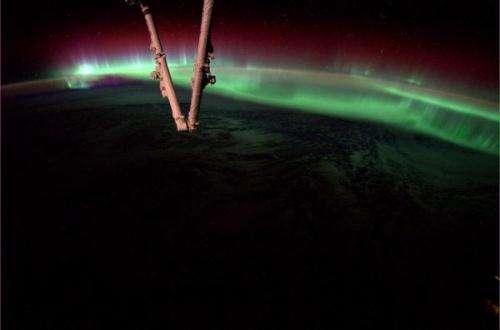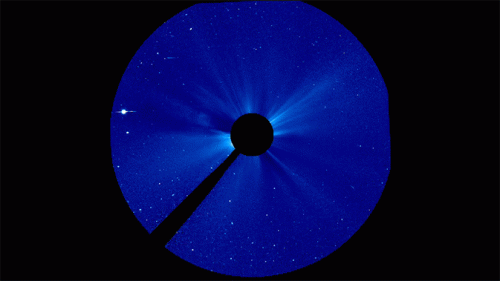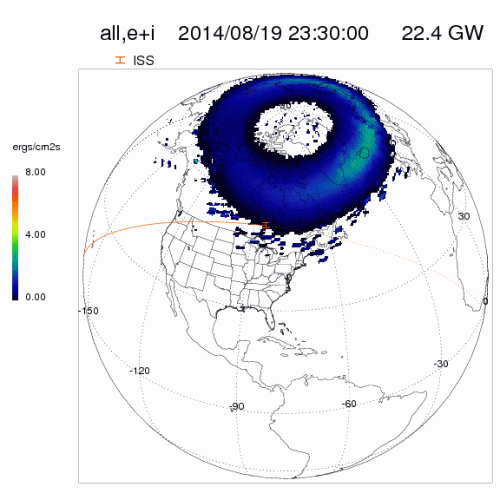An aurora dances in the atmosphere on Aug. 20, 2014, as the International Space Station flew over North America. This image was captured by astronaut Reid Wiseman from his vantage point on the ISS. Credit: NASA
On the evening of Aug. 20, 2014, the International Space Station was flying past North America when it flew over the dazzling, green blue lights of an aurora. On board, astronaut Reid Wiseman captured this image of the aurora, seen from above.
This auroral display was due to a giant cloud of gas from the sun – a coronal mass ejection or CME – that collided with Earth's magnetic fields on Aug. 19, 2014, at 1:57 a.m. EDT. This event set off, as it often does, what's called a geomagnetic storm. This is a kind of space weather event where the magnetic fields surrounding Earth compress and release. This oscillation is much like a spring moving back and forth, but unlike a spring, moving magnetic fields cause an unstable environment, setting charged particles moving and initiating electric currents.
The geomagnetic storm passed within 24 hours or so but, while it was ongoing, the solar particles and magnetic fields caused the release of particles already trapped near Earth. These, in turn, triggered reactions in the upper atmosphere in which oxygen and nitrogen molecules released photons of light.
The result: an aurora, and a special sight for the astronauts on board the space station.
A coronal mass ejection, or CME, burst from the sun on Aug. 15, 2014. When it arrived at Earth, it sparked aurora over North America. This looping animated GIF of the CME was captured by the Solar and Heliospheric Observatory. The bright planet seen moving toward the left is Mercury. Credit: ESA&NASA/SOHO
This model shows where the aurora was visible at 7:30 p.m. EDT on Aug. 19, 2014, as the International Space Station flew over it. The model is an Ovation Prime model and it is available from the Community Coordinated Modeling Center at NASA's Goddard Space Flight Center in Greenbelt, Maryland. Credit: NASA/CCMC
Provided by NASA


























